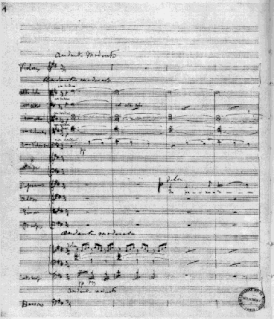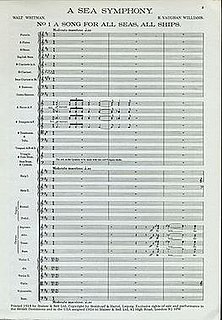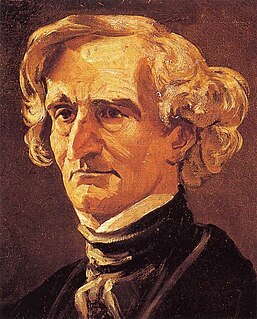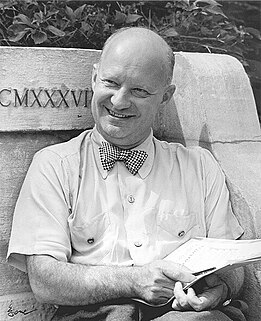Related Research Articles

The War Requiem, Op. 66, is a large-scale setting of the Requiem composed by Benjamin Britten mostly in 1961 and completed in January 1962. The War Requiem was performed for the consecration of the new Coventry Cathedral, which was built after the original fourteenth-century structure was destroyed in a World War II bombing raid. The traditional Latin texts are interspersed, in telling juxtaposition, with extra-liturgical poems by Wilfred Owen, written during World War I.

Erkki-Sven Tüür is an Estonian composer.

A German Requiem, to Words of the Holy Scriptures, Op. 45 by Johannes Brahms, is a large-scale work for chorus, orchestra, a soprano and a baritone soloist, composed between 1865 and 1868. It comprises seven movements, which together last 65 to 80 minutes, making this work Brahms's longest composition. A German Requiem is sacred but non-liturgical, and unlike a long tradition of the Latin Requiem, A German Requiem, as its title states, is a Requiem in the German language.

Gabriel Fauré composed his Requiem in D minor, Op. 48, between 1887 and 1890. The choral-orchestral setting of the shortened Catholic Mass for the Dead in Latin is the best-known of his large works. Its focus is on eternal rest and consolation. Fauré's reasons for composing the work are unclear, but do not appear to have had anything to do with the death of his parents in the mid-1880s. He composed the work in the late 1880s and revised it in the 1890s, finishing it in 1900.

A Sea Symphony is an hour-long work for soprano, baritone, chorus and large orchestra written by Ralph Vaughan Williams between 1903 and 1909. The first and longest of his nine symphonies, it was first performed at the Leeds Festival in 1910 with the composer conducting, and its maturity belies the relatively young age — thirty — when he began sketching it. Moreover it is one of the first symphonies in which a chorus is used throughout as an integral part of the texture and it helped set the stage for a new era of symphonic and choral music in Britain during the first half of the 20th century. It was never numbered.
Václav Nelhýbel was a Czech American composer, mainly of works for student performers.

The Requiem, Op. 9, is a 1947 setting of the Latin Requiem by Maurice Duruflé for a solo voice, mixed choir, and organ, or orchestra with organ. The thematic material is mostly taken from the Mass for the Dead in Gregorian chant. The Requiem was first published in 1948 by Durand in an organ version.

Polish Requiem, also A Polish Requiem, is a large-scale requiem mass for soloists, mixed choir and orchestra by the Polish composer Krzysztof Penderecki. The Lacrimosa, dedicated to the trade union leader Lech Wałęsa, was written for the unveiling of a statue at the Gdańsk Shipyard to commemorate those killed in the Polish anti-government riots in 1970. He expanded the work into a requiem, writing other parts to honour different patriotic events over the next four years.
Antonín Dvořák's Requiem in B♭ minor, Op. 89, B. 165, is a funeral Mass scored for soloists, choir and orchestra. It was composed in 1890 and performed for the first time on 9 October 1891, in Birmingham, England, with the composer conducting.

A choral symphony is a musical composition for orchestra, choir, and sometimes solo vocalists that, in its internal workings and overall musical architecture, adheres broadly to symphonic musical form. The term "choral symphony" in this context was coined by Hector Berlioz when he described his Roméo et Juliette as such in his five-paragraph introduction to that work. The direct antecedent for the choral symphony is Ludwig van Beethoven's Ninth Symphony. Beethoven's Ninth incorporates part of the Ode an die Freude, a poem by Friedrich Schiller, with text sung by soloists and chorus in the last movement. It is the first example of a major composer's use of the human voice on the same level as instruments in a symphony.
Will Todd is an English musician and composer. He is a pianist, who performs regularly with others in his own works.

When Lilacs Last in the Dooryard Bloom'd: A Requiem for those we love(An American Requiem) is a 1946 oratorio by composer Paul Hindemith, based on the poem of the same name by Walt Whitman. It is the first musical work to include the entirety of Whitman's 1865 poem. Conductor Robert Shaw and the Robert Shaw Chorale commissioned the work after the 1945 death of President Franklin D. Roosevelt. It received its world premiere on May 14, 1946, at New York City Center, with the Collegiate Chorale conducted by Shaw and soloists Mona Paulee, contralto, and George Burnson, baritone. Paulee performed the work again with bass-baritone Chester Watson and the CBS Symphony Orchestra for the work's first recorded broadcast on CBS Radio on June 30, 1946.

Sergiu Natra was an Israeli composer of classical music.

The Requiem by Frederick Delius was written between 1913 and 1916, and first performed in 1922. It is set for soprano, baritone, double chorus and orchestra, and is dedicated "To the memory of all young artists fallen in the war". The Requiem is Delius's least-known major work, not being recorded until 1968 and having received only seven performances worldwide by 1980.
Creation/Creator is an oratorio for soprano, mezzo-soprano, tenor, baritone, bass, chorus, and orchestra by the American composer Christopher Theofanidis. The work was commissioned by the Atlanta Symphony Orchestra and was first performed on April 23, 2015 by the soprano Jessica Rivera, mezzo-soprano Kelley O'Connor, tenor Thomas Cooley, baritone Nmon Ford, bass Evan Boyer, the actors Steven Cole and Shannon Eubanks, and the Atlanta Symphony Chorus and Orchestra under the conductor Robert Spano.
Requiem für einen jungen Dichter is an extended composition by Bernd Alois Zimmermann, written from 1967 to 1969 for two speakers, soprano and baritone soloists, three choirs, jazz band, organ, tapes and a large orchestra. Subtitled Lingual, it sets a text that includes the Latin liturgical Mass for the Dead and literary, philosophical, religious and political texts, related to politics and the history of mind during the composer's life. The work has elements of a cantata, an oratorio and an audio play.
The Requiem by the Hungarian composer György Ligeti is a large-scale choral and orchestral composition, composed between 1963 and 1965.
References
- 1 2 Glass, Philip (1999). "Symphony No. 5 "Requiem, Bardo, Nirmanakaya"". G. Schirmer Inc. Retrieved June 1, 2016.
- ↑ Griffiths, Paul (October 9, 2000). "MUSIC REVIEW; Philip Glass Takes on a History of the Cosmos". The New York Times . Retrieved February 2, 2017.